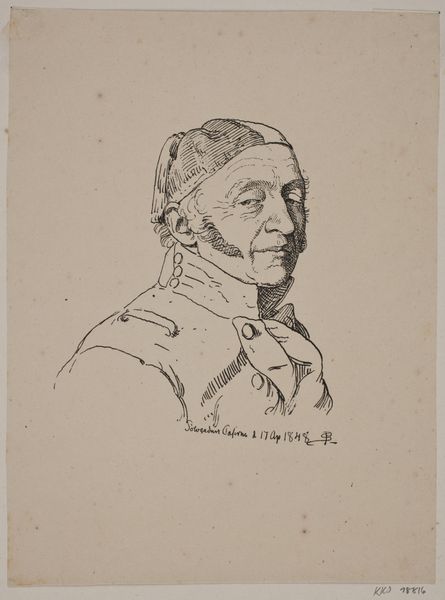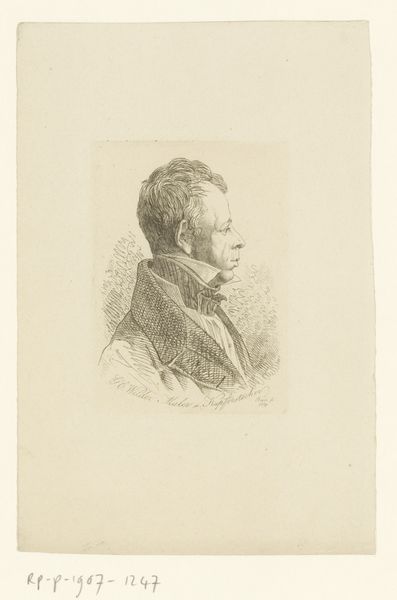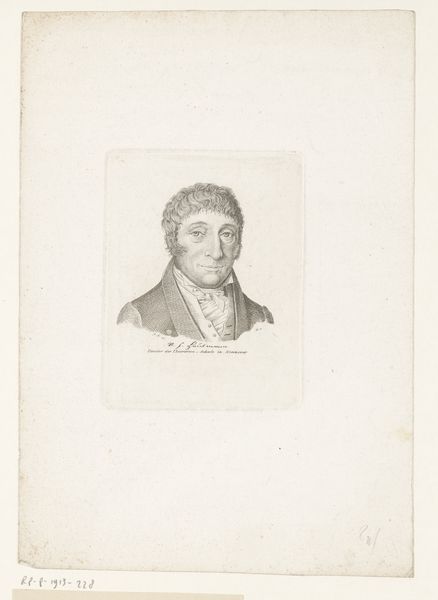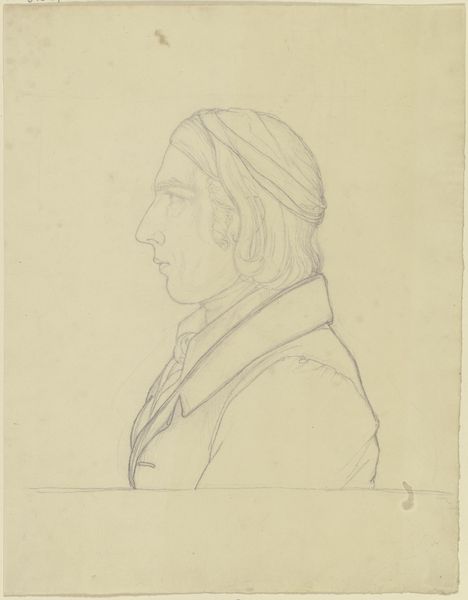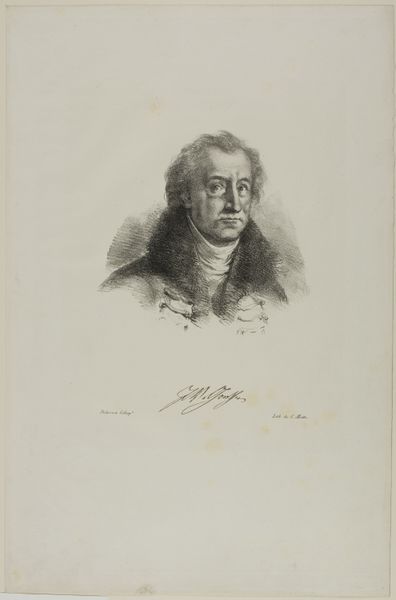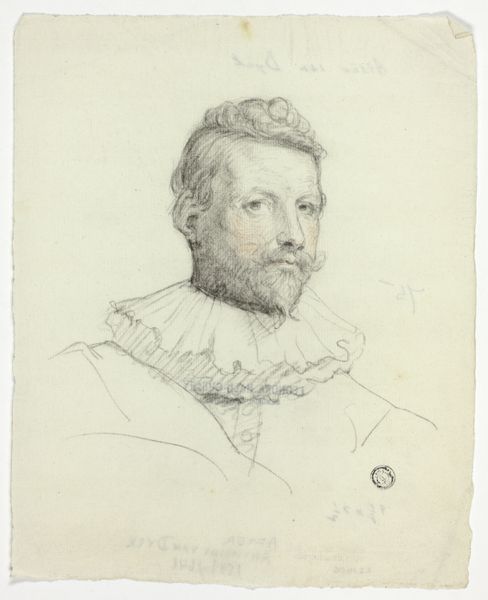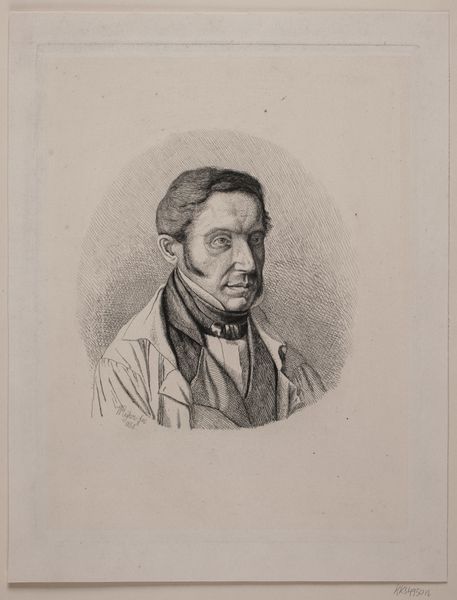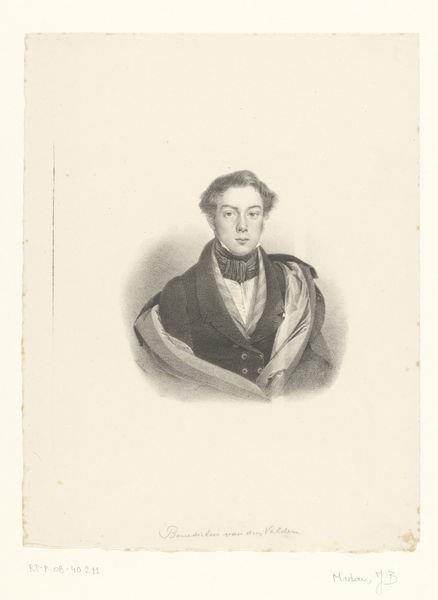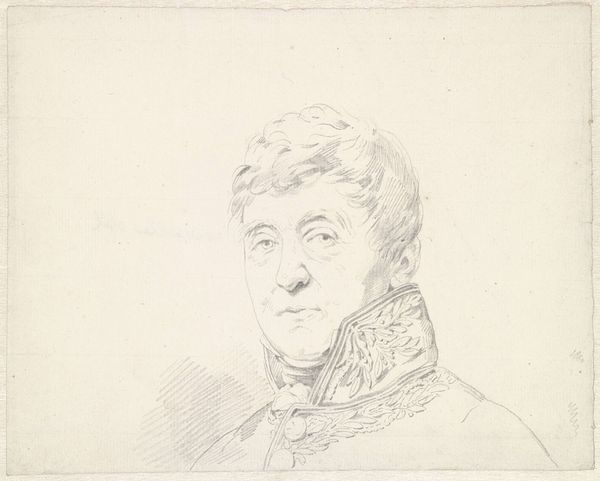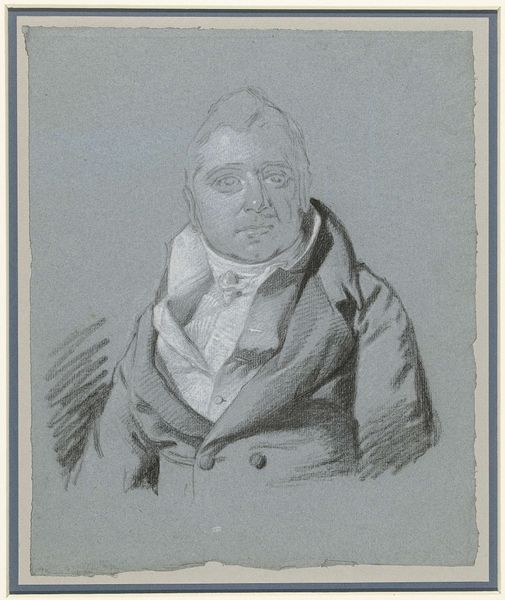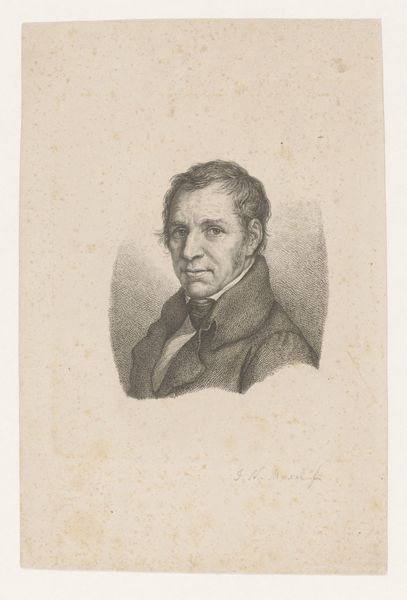
drawing, print, ink, engraving
#
portrait
#
drawing
# print
#
ink
#
romanticism
#
portrait drawing
#
engraving
Dimensions: 200 mm (height) x 149 mm (width) (bladmaal)
Editor: Here we have P.C. Skovgaard's "Major Blom," an ink engraving from 1848. It’s quite a striking portrait, even with the limited use of line. The subject’s gaze feels both intense and weary. What symbols or cultural references do you notice in this piece? Curator: I'm drawn to the man's head covering. It is not simply utilitarian. He wears the *casquette*, also referred to as a forage cap. Consider what such a recognizable object signifies, then and now. Editor: So, the hat tells us something about his identity. What does that reveal to you? Curator: In the mid-19th century, this cap symbolized the bourgeoisie in European society. Wearing it here shows how one saw themself, which then allows others to do the same. Note, too, how Skovgaard portrays Major Blom, fixing his hand just inside his jacket; what might *that* imply? Editor: Perhaps a sense of personal restraint, or even a discomfort being seen. Curator: Precisely! Skovgaard's attention to these visual cues constructs not just a likeness, but a psychological profile steeped in the conventions and contradictions of the era. And consider the date; 1848 was the year of revolutions. Editor: That context enriches my interpretation so much! The portrait becomes a study in social anxiety during a time of upheaval. I never would have picked up on the cultural relevance of his hat without your insight. Curator: The objects we choose to wear and the ways we carry ourselves carry cultural memory with them. And the most fascinating part? These symbols never stay static.
Comments
No comments
Be the first to comment and join the conversation on the ultimate creative platform.
